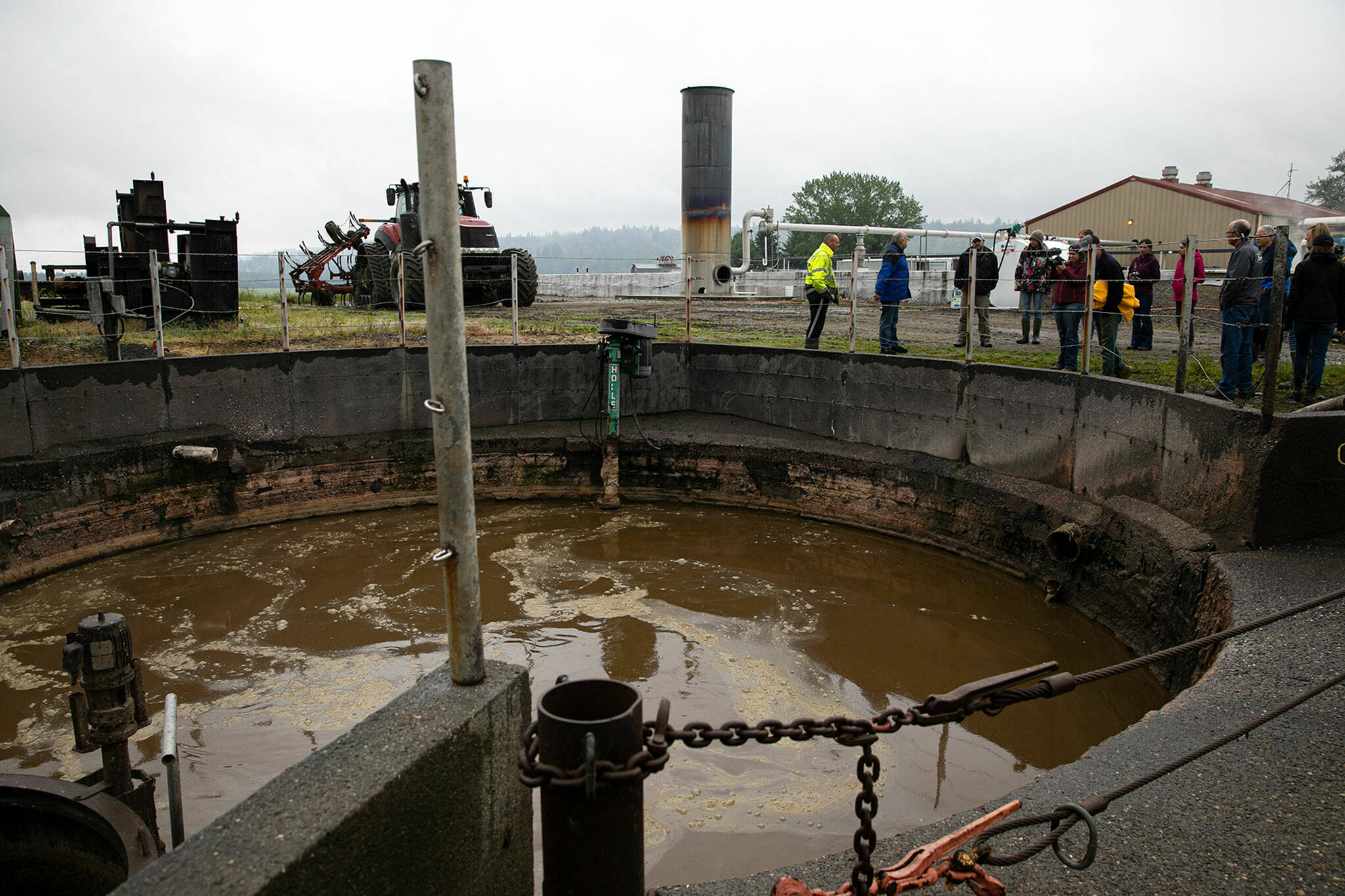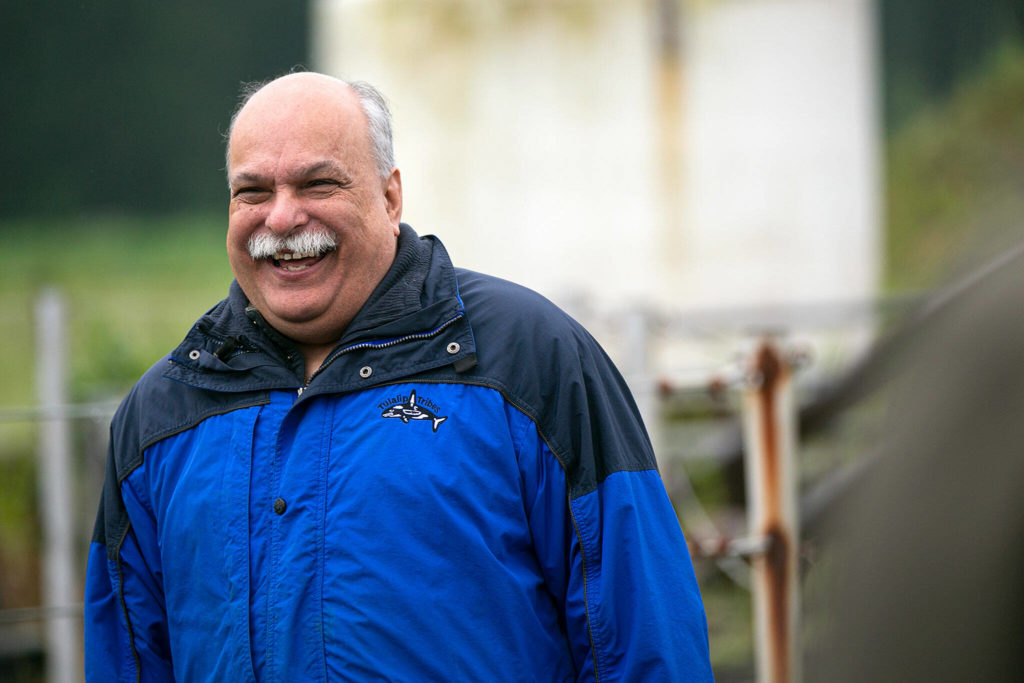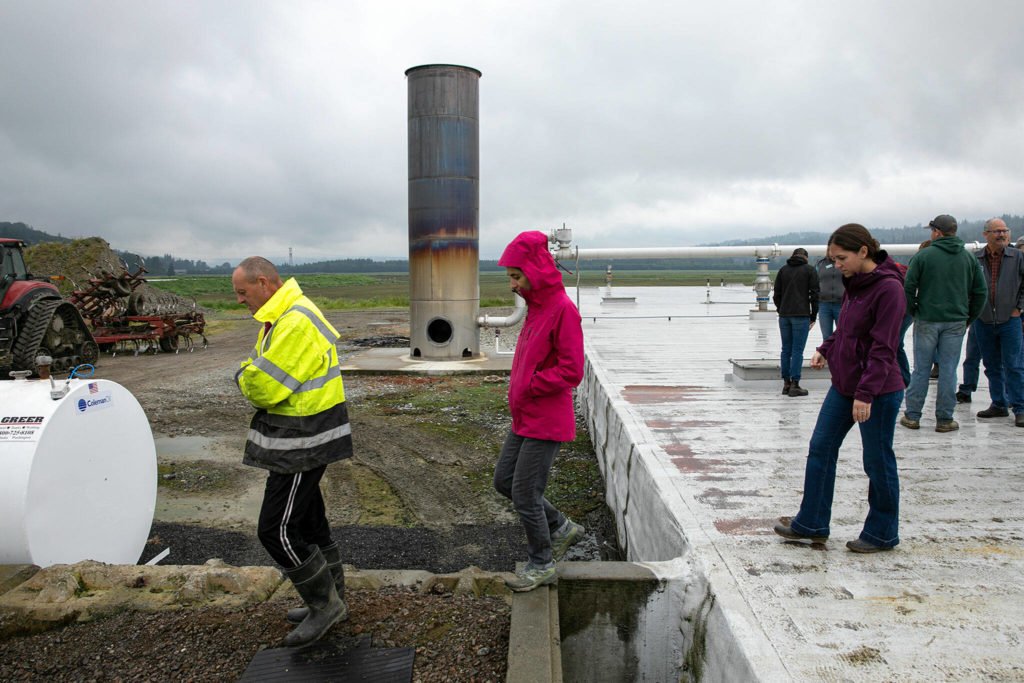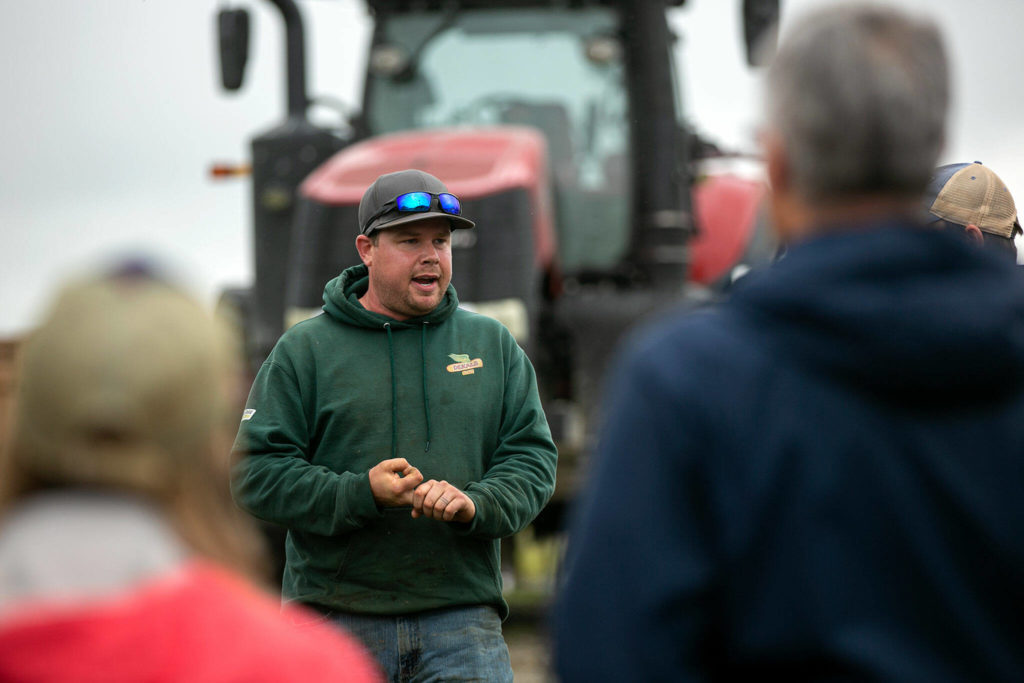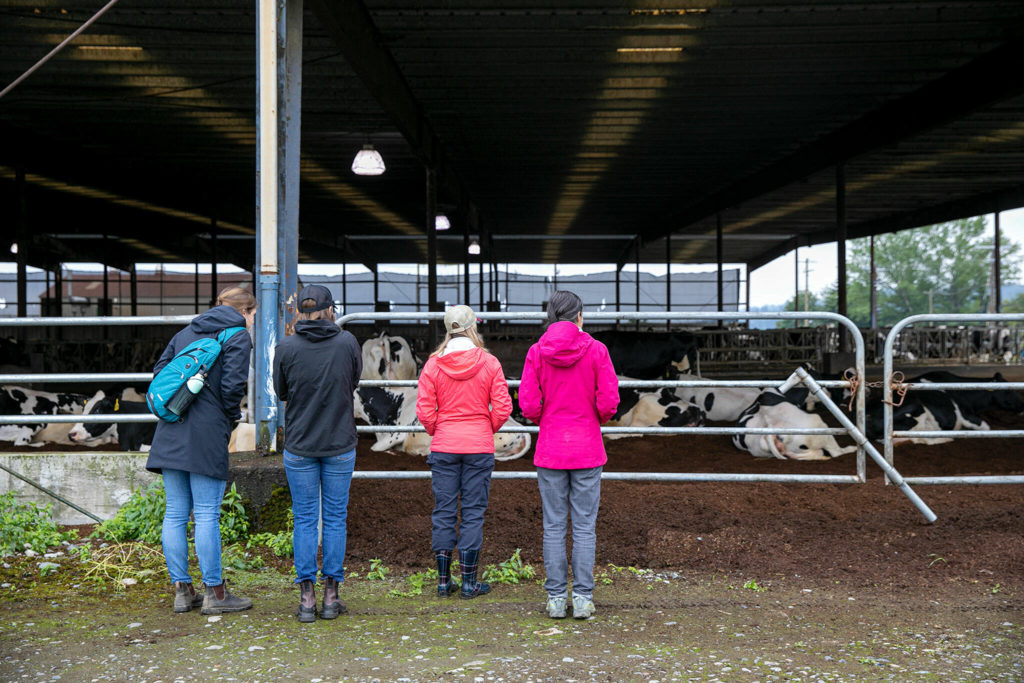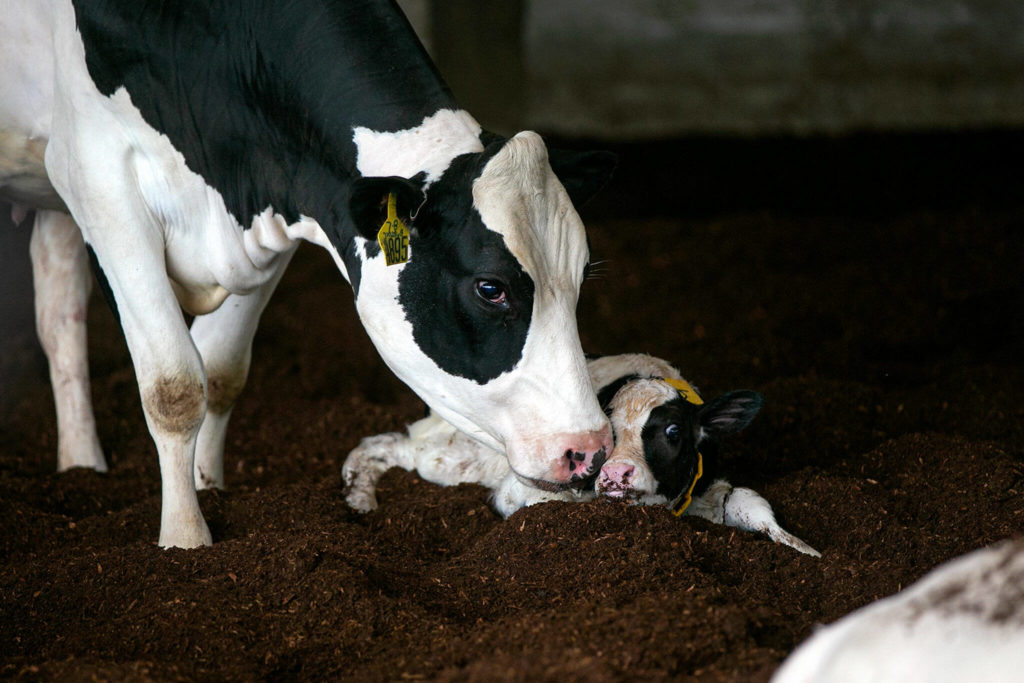MONROE — Cow manure may soon power as many as 675 homes thanks to a new partnership between the Snohomish County Public Utility District, Tulalip Tribes and Werkhoven Dairy.
The Tulalip Tribes teamed up with the Monroe dairy farm to build an anaerobic digester in the early 2000s, naming their partnership Qualco. In 2014, the PUD began buying electricity produced by the digester.
In the digester, bacteria break down manure from 2,300 cows and food waste into fertilizer and biogas, which is turned into electricity.
In February, the PUD began installing a $1.5 million new generator at the digester, said Scott Spahr, the district’s manager of generation operations and engineering. The new equipment will produce electricity for about 675 homes, up from 450, he said. The plan is to turn on the generator by mid-August.
Spahr said the digester provides a reliable source of renewable power for the PUD, which has 360,000 electric customers.
“You want as many renewable energy sources as you can,” he said. “This is a small one, but adds diversity to our mix.”
Renewable power is not the only benefit of the Qualco project. The digester helped build a relationship between farmers and the tribes, since it began running in 2008, said Daryl Williams, environmental liaison for the Tulalip Tribes.
“That relationship has been growing ever since,” he told about 20 attendees on a tour of the digester June 17. The tour was hosted by the Sustainable Lands Strategy of Snohomish County.
He said the tribes got involved primarily to protect water quality. When farmers spread manure in fields, floods can wash nutrients into waterways. The digester breaks down manure so plants can more easily absorb nutrients, lessening stream pollution.
Williams said another goal was to help dairy farmers stay in business. He joked he couldn’t imagine a world without ice cream or cheese.
The digester consumes about 70% manure and 30% food waste, which includes discarded grocery store produce and expired alcohol and soda.
For Werkhoven Dairy, the technology has helped with nutrient management, said Jon Van Nieuwenhuyzen, a third-generation farmer and Qualco’s operator. The digester separates out different nutrients, allowing the farm to be more precise when applying fertilizer, he said.
Precision is especially important, as global prices of fertilizer have skyrocketed and dairy farms face thin margins.
“Fertilizer is a finite resource so you better not be wasting it. It’s also doubled in price,” Van Nieuwenhuyzen said on the tour June 17.
He said the partnership with the Tulalip Tribes has also helped the farm grow. The operation has doubled in number of acres and cows.
Once the new generator is built, the PUD will take over power generation at the site. Spahr said the new arrangement will allow the PUD to focus on electricity production and Qualco on farming and running the digester.
Jacqueline Allison: 425-339-3434; jacqueline.allison@heraldnet.com; Twitter: @jacq_allison.
Talk to us
> Give us your news tips.
> Send us a letter to the editor.
> More Herald contact information.
